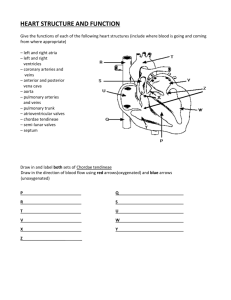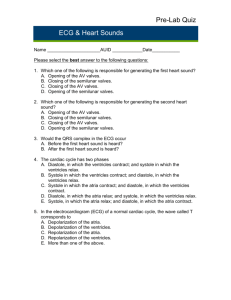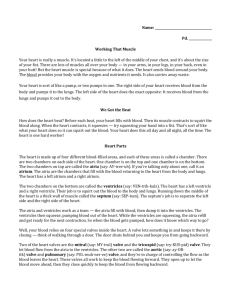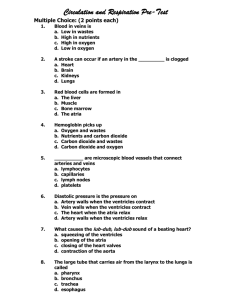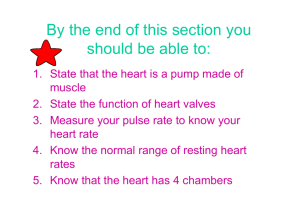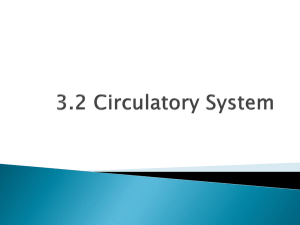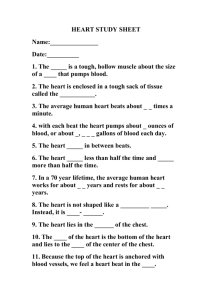The heart and the circulatory system animation ppt
advertisement
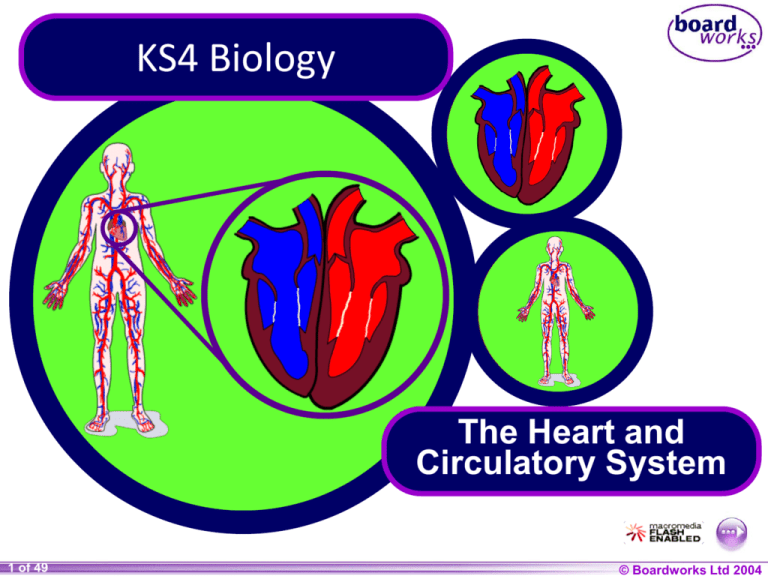
KS4 Biology The Heart and Circulatory System 1 of 49 © Boardworks Ltd 2004 Heartbeat animation Stages of a heartbeat Stage 1: A heartbeat begins with the heart muscle relaxed and valves closed. Blood flows into the two atria and both sides fill up with blood. This blood has to be pushed through the valves to get into the ventricles. How does this happen? Stages of a heartbeat Stage 2: The atria contract and the blood is squeezed which causes the valves leading to the ventricles to open. Blood then flows from the atria into the ventricles. What happens to the open valves when the atria are empty? Stages of a heartbeat Stage 2 (continued): The valves between the atria and the ventricles close. This prevents any backflow. What happens next to the blood in the ventricles? Stages of a heartbeat Stage 3: Almost immediately, the ventricles contract and the blood is squeezed again. The pressure of the blood forces open the valves leading out of the heart. Blood is pumped out of the heart. What happens to the open valves when the ventricles are empty? Stages of a heartbeat Stage 3 (continued): When the ventricles are empty, the valves leading out of the heart close and the heart muscle relaxes. This completes the sequence of contraction and relaxation in one heartbeat. What will happen next? Stages of a heartbeat Stage 1 (again): The atria fill up with blood as the heartbeat sequence begins again. Why are the walls of the atria thinner than the walls of the ventricles? Why is the wall of the left ventricle thicker than the right ventricle? Listening to a beating heart: lub-dub What does a doctor hear when they listen to a patients’ heart? lub-dub, lub-dub, lub-dub, lub-dub, lub-dub, lub-dub… The sound of a heartbeat is the sound of the heart valves. The “lub” is caused by the closing of the valves leading to the ventricles. The “dub” is caused by the closing of the valves leading out of the heart.


